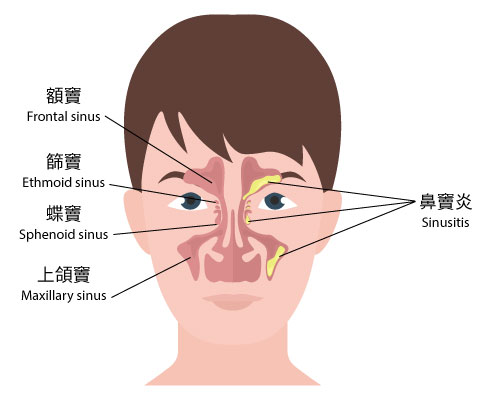Allergic Rhinitis vs. Sinusitis: What Are The Differences?


Allergic rhinitis and sinusitis are two common nasal diseases that have similar symptoms, which is why many people often get confused about their symptoms and treatment methods. It is very important to correctly distinguish between the two, as misdiagnosis may delay treatment and further aggravate symptoms. We will explain the differences between allergic rhinitis and sinusitis below.
What are allergic rhinitis and sinusitis?
Allergic rhinitis refers to an allergic reaction of the nose to allergens such as pollen, dust, animal hair, etc. When these substances enter the nasal cavity, the nose may overreact, causing symptoms like a stuffy and runny nose, and sneezing.
Sinusitis refers to inflammation of the sinuses, which are hollow spaces in the nasal cavity that are divided into four parts: the frontal sinuses, ethmoid sinuses, sphenoid sinuses, and maxillary sinuses. When the sinuses become infected or blocked, it can cause symptoms such as a stuffy nose, headache, and yellowish-green nasal discharge.
Comparing allergic rhinitis and sinusitis
Allergic rhinitis and sinusitis cause some similar symptoms such as a stuffy and runny nose and headache, but they can be different in some ways.
The symptoms of allergic rhinitis usually last for a longer time, probably weeks or months, and may intensify when the patient is exposed to allergens. The symptoms may worsen during allergy seasons, such as spring or autumn. Other symptoms include sneezing, runny nose, itchy nose, throat and eyes, etc.
The symptoms of sinusitis usually affect the head and face, including headache, facial pressure, stuffy nose, yellowish-green nasal discharge, and decreased sense of smell. These symptoms may last for a few days or weeks and may be similar to those of illnesses like colds or the flu.
The most obvious difference between the two is that allergic rhinitis causes clear and transparent nasal discharge, while sinusitis causes yellowish-green discharge.
Diagnosing allergic rhinitis and sinusitis
The best way to distinguish between allergic rhinitis and sinusitis is to seek help from a professional doctor. The doctor may perform a physical examination, inquire about your medical history and symptoms, and then perform necessary tests.
For allergic rhinitis, doctors usually conduct an allergy skin test to identify the allergen. The test typically involves pricking a small area of the skin and inserting potential allergens into that area, observing if there is redness or itching. Doctors may also ask you to record the duration of allergen exposure and the appearance of symptoms to help identify the allergen.
For sinusitis, doctors may perform examinations such as skull X-rays, CT scans, or magnetic resonance imaging (MRI) to determine the condition of the sinuses. Doctors may also insert a small camera called a nasal endoscope into the nose to observe the nasal cavity and sinuses.
Related Brands



